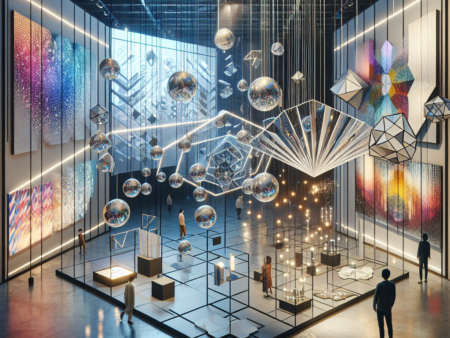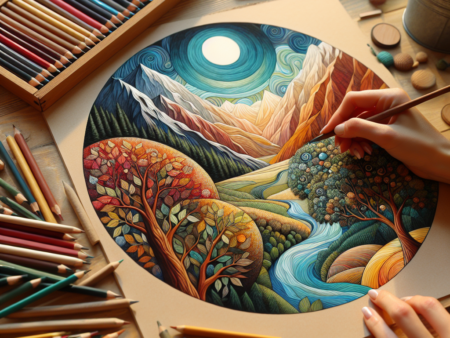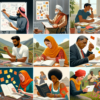Deskripsi meta tentang Seni Digital: Karya dan Inovasi di Era Modern: Eksplorasi kreatif melalui teknologi, menghasilkan karya seni yang inovatif dan memukau.
Seni Digital: Karya dan Inovasi di Era Modern
-
Table of Contents
- Introduction
- The Rise of Digital Art in Indonesia
- Exploring the Historical Context
- Embracing Technology and Innovation
- Breaking Boundaries and Challenging Norms
- The Impact of Digital Art in Indonesia
- Engaging a Wider Audience
- Collaboration and Cross-disciplinary Work
- Preserving Indonesian Culture
- The Challenges and Future of Digital Art in Indonesia
- Infrastructure and Access to Technology
- Educational Initiatives and Support
- Embracing Technological Advancements
- Summary
Introduction

Digital art has revolutionized the way artists express themselves and connect with their audience. In Indonesia, the digital art scene has been thriving, with artists embracing technology to create innovative and captivating works. This article explores the world of digital art in Indonesia, highlighting the creativity and innovation that artists bring to the table in the modern era.
The Rise of Digital Art in Indonesia
Exploring the Historical Context
Digital art in Indonesia has its roots in the early 1990s when the internet started to gain popularity in the country. Artists began experimenting with digital tools and software, exploring the possibilities of creating art using computers. This marked the beginning of a new era in Indonesian art, where traditional techniques merged with digital technology.
Embracing Technology and Innovation
One of the reasons for the rapid growth of digital art in Indonesia is the accessibility of technology. With the increasing availability of affordable computers, software, and digital tools, artists have been able to explore their creativity without the limitations of traditional art forms. This has led to a surge in the number of digital artists in the country, each bringing their unique style and perspective to the table.
Breaking Boundaries and Challenging Norms
Digital art has allowed Indonesian artists to break free from the constraints of traditional art forms and challenge societal norms. Through their digital creations, artists have been able to address social and political issues, express their thoughts and emotions, and push the boundaries of what is considered acceptable in Indonesian society. This has opened up new avenues for artistic expression and has given a voice to those who may have been marginalized in the past.
The Impact of Digital Art in Indonesia
Engaging a Wider Audience
Digital art has played a significant role in engaging a wider audience in Indonesia. With the rise of social media platforms and online galleries, artists can showcase their work to a global audience. This has not only increased the visibility of Indonesian artists but has also allowed them to connect with art enthusiasts and collectors from around the world. The accessibility of digital art has made it easier for people to appreciate and engage with art, regardless of their location or background.
Collaboration and Cross-disciplinary Work
Digital art has also fostered collaboration and cross-disciplinary work in Indonesia. Artists are no longer limited to working within their own medium but can collaborate with professionals from various fields, such as technology, design, and animation. This has resulted in the creation of immersive and interactive art experiences that blur the boundaries between different art forms. The fusion of art and technology has given rise to new possibilities and has pushed the boundaries of what is considered traditional art.
Preserving Indonesian Culture
Digital art has also played a crucial role in preserving and promoting Indonesian culture. Many artists have used digital tools to reinterpret traditional Indonesian art forms, such as batik and wayang, in a contemporary context. By combining traditional elements with modern techniques, artists have been able to keep Indonesian culture alive and relevant in the digital age. This has not only attracted international attention but has also instilled a sense of pride and appreciation for Indonesian heritage among the younger generation.
The Challenges and Future of Digital Art in Indonesia
Infrastructure and Access to Technology
While the digital art scene in Indonesia has been flourishing, there are still challenges that need to be addressed. One of the main challenges is the lack of infrastructure and access to technology in certain parts of the country. Not all artists have access to high-speed internet or the latest digital tools, which can hinder their creative process and limit their opportunities for growth. Efforts need to be made to bridge this digital divide and provide equal opportunities for artists across the country.
Educational Initiatives and Support
Another challenge is the need for educational initiatives and support for digital artists in Indonesia. While there are art schools and institutions that offer traditional art programs, there is a lack of specialized education and training in digital art. By investing in educational initiatives and providing support for digital artists, Indonesia can nurture and develop the next generation of talented digital artists.
Embracing Technological Advancements
The future of digital art in Indonesia lies in embracing technological advancements and staying at the forefront of innovation. As technology continues to evolve, artists need to adapt and explore new tools and techniques to push the boundaries of their creativity. This requires a willingness to embrace change and a commitment to continuous learning and experimentation.
Summary
Digital art in Indonesia has come a long way since its inception in the 1990s. Artists have embraced technology and innovation, breaking free from traditional art forms and challenging societal norms. The impact of digital art in Indonesia can be seen in its ability to engage a wider audience, foster collaboration, and preserve Indonesian culture. However, there are still challenges that need to be addressed, such as infrastructure and access to technology, as well as the need for educational initiatives and support. By overcoming these challenges and embracing technological advancements, Indonesia can continue to thrive in the world of digital art.







